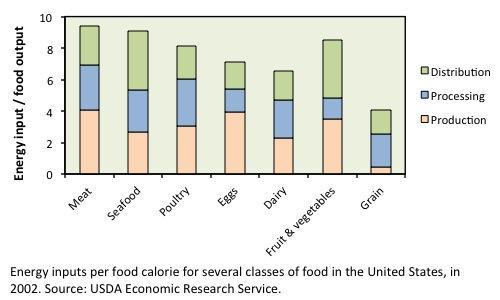
Giving up meat makes sense — for the health of people and the planet
Giving up meat and even seafood was easy for me.
After an illness a couple of years ago, these things just didn’t appeal to me any longer. I still eat an occasional piece of cheese, cream in my coffee and eggs from our backyard hens. And the rest of my family continues to consume meat, though not a great deal.
According to worldwide estimates, we number some 7.5 billion people today, but that number will swell to 9 billion or more by 2050. Can we feed them? Probably, experts say, though with increases in flooding globally and more frequent, long droughts, the ecosystem is becoming stressed. Careful resource planning will be required, and food should be planned to use the space judiciously, which, of course, brings beef into the picture.
There’s also the matter of ethics. Many animals born into the livestock industry often spend their entire existence crammed into overcrowded cages and pens and live a cruel existence before being processed for someone’s dinner table. But people have an option of buying from organic producers who employ more humane treatment. San Marcos is lucky to have eggs and meat available from some of those producers.
There’s also the human health argument, and giving up meat — especially beef — can help lower cholesterol.
And then there’s the environmental side of things. Researchers estimate that livestock-based food production creates about onefifth of all global greenhouse gas emissions. It also consumes water and land for growing crops to feed livestock and for providing grazing space for those animals.
The World Resources Institute produced a guide to help companies measure, manage and report greenhouse gas emissions from agriculture, including farming, livestock and land use change. This study helps break down all of the various livestock categories in a standardized, whole-picture way to figure out each one’s individual contribution to global warming. While it seems obvious that a cow contributes more greenhouse gas emissions than a chicken, putting a more precise figure on those various animals can lend clarity for both policy makers, as well as for consumers looking to curb the impact their own choices make to the emissions issue.
Researchers from Bard College, the Weizmann Institute of Science and Yale University focused on animals in the U.S. food production system. First, the researchers calculated the feed costs for each class of animal — beef, pork, chicken, laying hens and dairy cows. They did not include fish because data about resources used to raise those animals is limited, and fish only contributed about two percent of American’s animal-based energy intake from 2000 to 2013.
They used data collected between 2000 to 2010 from the U.S. Departments of Agriculture, Interior and Energy about land area, water and nitrogen fertilizer to determine the burden produced by feeding and raising all of those animals. Then, they standardized the data by calories contained in a given amount of milk, eggs, beef, pork or chicken.
The findings are sobering. Pork, chicken, dairy and eggs are nearly equivalent in their environmental burdens. But beef requires far, far more resources than any of those other protein categories. The team calculated that beef requires 28 times more land, six times more fertilizer and 11 times more water compared to those other food sources. That adds up to about five times more greenhouse gas emissions.
To further put these findings into perspective, the authors also ran the same calculations for several staple crops. On a calorie-to-calorie basis, potatoes, wheat and rice require two to six time less resources to produce than pork, chicken, eggs or dairy.
In other words, while shifting to a livestock-free diet does the most good for the planet, just giving up or limiting beef is probably an effective compromise for those looking to curb their environmental impacts.
Finally, research from the University of Vermont indicates that the machinery associated with animal-derived foods is high. This shouldn’t surprise anyone; the production of these foods — even seafood — requires machinery, sophisticated processing facilities, feed production, refrigerated transportation and copious amounts of fuel. Modern fruit and vegetable farming systems are highly industrialized, relying on vast amounts of fertilizer, pesticides and tillage practices that require heavy machinery and plenty of fuel. While grain is less energy intensive than other foods, it lacks easily absorbed nutrients and provides fairly empty calories. So in the U.S. anyway, according to the Vermont study, there appears to be little meaningful difference between the energy intensity of animal-derived foods relative to fruits and vegetables.
For me, I’ll continue eating vegetables primarily, organic as much as possible and produce from our wonderful Farmer’s Market when I can. And I’ll keep cooking what my family wishes to eat, though beef will become ever more scarce. I’ll also enjoy the fact that our backyard chickens consume most of what used to go down the garbage disposal while providing us with lovely eggs.











